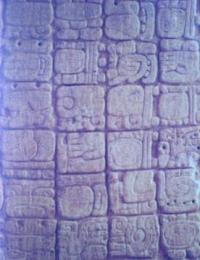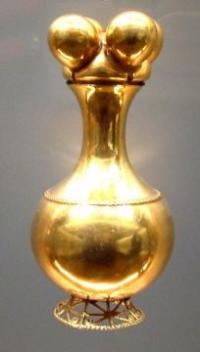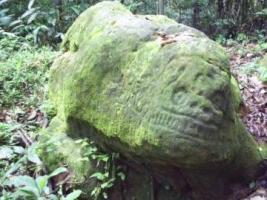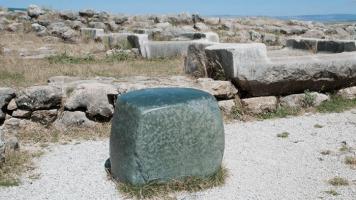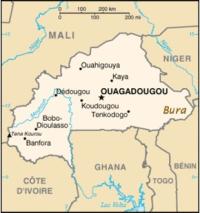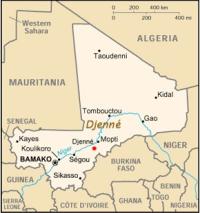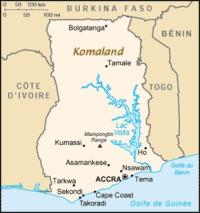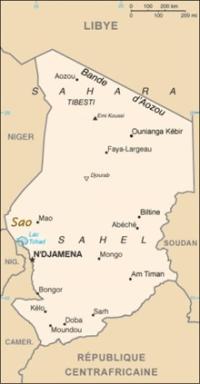Copy Link
Add to Bookmark
Report
dictyNews Volume 38 Number 27

dictyNews
Electronic Edition
Volume 38, number 27
October 26, 2012
Please submit abstracts of your papers as soon as they have been
accepted for publication by sending them to dicty@northwestern.edu
or by using the form at
http://dictybase.org/db/cgi-bin/dictyBase/abstract_submit.
Back issues of dictyNews, the Dicty Reference database and other
useful information is available at dictyBase - http://dictybase.org.
Follow dictyBase on twitter:
http://twitter.com/dictybase
Note from Guenther Gerisch:
During the production process of the paper Gerisch et al "PIP3 Waves
and PTEN Dynamics in the Emergence of Cell Polarity", Biophysical
Journal, Volume 103, Issue 6, 1170-1178, 19 September 2012,the
Movies had been aligned at random, such that none of the links
opened the right Movie.These errors have now been corrected.
=========
Abstracts
=========
Comparative genomics in the Amoebozoa clade
Gernot Gloeckner and Angelika A. Noegel
Biological Reviews, in press
Amoeboid life forms can be found throughout the evolutionary tree.
The greatest proportion of these life forms is found in the Amoebozoa
clade, one of the six major eukaryote evolutionary branches. Despite
its common origin this clade exhibits a wide diversity of lifestyles
including free-living and parasitic species and species with multicellular
and multinucleate life stages. In this group, development, cooperation,
and social behaviour can be studied in addition to traits common to
unicellular organisms. To date, only a few Amoebozoa genomes have
been sequenced completely, however a number of expressed
sequence tags (ESTs) and complete and draft genomes have become
available recently for several species that represent some of the major
evolutionary lineages in this clade. This resource allows us to compare
and analyse the evolutionary history and fate of branch-specific genes
if properly exploited. Despite the large evolutionary time scale since the
emergence of the major groups the genomic organization in Amoebozoa
has retained common features. The number of Amoebozoa-specific
genetic inventions seems to be rather small. The emergence of subgroups
is accompanied by gene and domain losses and acquisitions of bacterial
gene material. The sophisticated developmental cycles of Myxogastria
and Dictyosteliida likely have a common origin and are deeply rooted in
amoebozoan evolution. In this review we describe initial approaches to
comparative genomics in Amoebozoa, summarize recent findings, and
identify goals for further studies.
Submitted by Gernot Gloeckner [gernot.gloeckner@uni-koeln.de]
---------------------------------------------------------------------------
Delineating the Core Regulatory Elements Critical for Directed Cell
Migration by Examining Folic Acid-Mediated Responses
Srinivasan, K.(a), Wright, G.(a), Hames, N.(a), Housman, M.(a),
Roberts, A.(a), Aufderheide, K.J.(b), and Chris Janetopoulos(a)
(a) Department of Biological Sciences, Vanderbilt University,
Nashville, TN 37232, USA.
(b) Department of Biology, Texas A&M University, College Station,
TX 77843, USA.
J Cell Sci., in press
Dictyostelium discoideum shows chemotaxis towards folic acid (FA)
throughout vegetative growth, and towards cAMP during development.
We determined the spatio-temporal localization of cytoskeletal and
signaling molecules and investigated the FA-mediated responses in a
number of signaling mutants to further our understanding of the core
regulatory elements that are critical for cell migration. Proteins
enriched in the pseudopods during chemotaxis also re-localize
transiently to the plasma membrane (PM) during uniform FA stimulation.
Alternatively, proteins that are absent from the pseudopods during
migration re-distribute transiently from the PM to the cytosol when
cells are globally stimulated with FA. These chemotactic responses to
FA were also examined in cells lacking the GTPases Ras C and G.
While Ras and Phosphoinositide 3-Kinase activity were significantly
decreased in Ras G and Ras C/G nulls, these mutants still migrated to
FA, indicating that other pathways must support FA-mediated
chemotaxis. We also examined the spatial movements of PTEN to uniform
FA and cAMP stimulation in Phospholipase C (PLC) null cells. The lack
of PLC strongly influences the localization of PTEN in response to FA,
but not cAMP.
In addition, we compared the gradient sensing behavior of polarized
cells migrating towards cAMP to that of unpolarized cells migrating
towards FA. The majority of polarized cells make U turns when the
cAMP gradient is switched from the front of the cell to the rear.
Conversely, unpolarized cells immediately extend pseudopods towards
the new FA source. We also observed that PM PI(3,4,5)P3 levels
oscillate in unpolarized cells treated with Latrunculin-A, while
polarized cells had stable PM PI(3,4,5)P3 responses toward the
chemoattractant gradient source. Similar findings were found in 4 hour
starved cells where there was a mixture of polarized and unpolarized
cells responding to cAMP. Taken together, these findings suggest that
similar components control gradient sensing during FA and
cAMP-mediated motility, but polarized cells have an easier time
forming a stabilized response which ultimately helps maintain their
directionality.
Submitted by Chris Janetopoulos [c.janetopoulos@vanderbilt.edu]
---------------------------------------------------------------------------
A kinesin-mediated mechanism that couples centrosomes to nuclei
Tikhonenko, I, Magidson, V, Graef, R, Khodjakov, A, and Koonce, M.P.
Division of Translational Medicine,Wadsworth Center and Department
of Cell Biology, University of Potsdam,
Cell Mol Life Science, in press
The M-type kinesin isoform, Kif9, has recently been implicated in
maintaining a physical connection between the centrosome and
nucleus in Dictyostelium discoideum. However, the mechanism by
which Kif9 functions to link these two organelles remains obscure.
Here we demonstrate that the Kif9 protein is localized to the nuclear
envelope and is concentrated in the region underlying the centrosome
point of attachment. Nuclear anchorage appears mediated through a
specialized transmembrane domain located in the carboxyl terminus.
Kif9 interacts with microtubules in in vitro binding assays and effects
an endwise depolymerization of the polymer. These results suggest a
model whereby Kif9 is anchored to the nucleus and generates a pulling
force that reels the centrosome up against the nucleus. This is a novel
activity for a kinesin motor, one important for progression of cells into
mitosis and to ensure centrosome-nuclear parity in a multinuclear
environment.
Submitted by Mike Koonce [koonce@wadsworth.org]
---------------------------------------------------------------------------
The adhesion modulation protein, AmpA localizes to an endocytic
compartment and influences substrate adhesion, actin polymerization
and endocytosis in vegetative Dictyostelium cells
Noratel, E.F., Petty, C.L. Kelsey, J.S., Cost, H.H., Basappa, N.
and Blumberg, D.D.
Department of Biological Sciences, University of Maryland, Baltimore
County, 1000 Hilltop Circle, Baltimore, Maryland 21250
BMC-Cell Biology, in press
Background: AmpA is a secreted 24Kd protein that has pleiotropic
effects on Dictyostelium development. Null mutants delay development
at the mound stage with cells adhering too tightly to the substrate.
Prestalk cells initially specify as prespore cells and are delayed in their
migration to the mound apex. Extracellular AmpA can rescue these
defects, but AmpA is also necessary in a cell autonomous manner for
anterior like cells (ALCs) to migrate to the upper cup. The ALCs are
only 10% of the developing cell population making it difficult to study
the cell autonomous effect of AmpA on the migration of these cells.
AmpA is also expressed in growing cells, but, while it contains a
hydrophobic leader sequence that is cleaved, it is not secreted from
growing cells. This makes growing cells an attractive system for
studying the cell autonomous function of AmpA.
Results: In growing cells AmpA plays an environment dependent
role in cell migration. Excess AmpA facilitates migration on soft,
adhesive surfaces but hinders migration on less adhesive surfaces.
AmpA also effects the level of actin polymerization. Knockout cells
polymerize less actin while over expressing cells polymerize more
actin than wild type. Overexpression of AmpA also causes an
increase in endocytosis that is traced to repeated formation of
multiple endocytic cups at the same site on the membrane.
Immunofluorescence analysis shows that AmpA is found in the
Golgi and colocalizes with calnexin and the slow endosomal
recycling compartment marker, p25, in a perinuclear compartment.
AmpA is found on the cell periphery and is endocytically recycled
to the perinuclear compartment.
Conclusion: AmpA is processed through the secretory pathway
and traffics to the cell periphery where it is endocytosed and
localizes to what has been defined as a slow endosomal recycling
compartment. AmpA plays a role in actin polymerization and cell
substrate adhesion.
Submitted by Daphne Blumberg [blumberg@umbc.edu]
==============================================================
[End dictyNews, volume 38, number 27]







